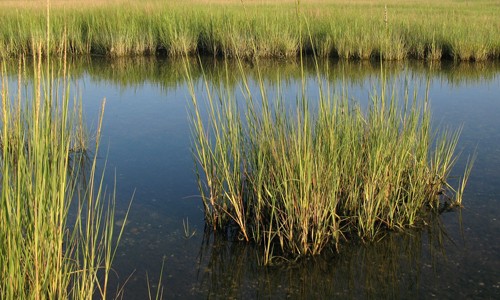
Smooth Cordgrass
Spartina alterniflora
This native perennial can grow to be 2-7feet tall and form dense colonies along the shoreline, wetlands, and intertidal zone. The flat leaves can be 12-20 inches long and taper to an inward rolled-up tip. Seedheads( 10-12 inches) at the end of the stem emerge in September and October. This plant spread through rhizomes which travel horizontally through the sand.
Uses- Smooth cordgrass is used for erosion control along shorelines as it is an effective soil stabilizer. In natural conditions on tidal marshes, this grass can screen suspended solids, absorb wave energy and provide food and shelter for marsh animals.
Cultivation- Smooth cordgrass is a poor seed producer which results in low seed fertility. If you wish to plant this species, containerized and bare-root plugs are recommended. You can plant smooth cordgrass between April 1st to September 30th, since this planting should occur after the last frost; it might happen earlier than April 1st in some areas. This plant is adapted to a variety of soils from sands to clays. Productivity is higher when planted in soils with a heavy mineral content such as mucky clays, clay loams, and fine sand. Smooth cordgrass needs to be planted at a site that is intertidal as it is very sensitive to reduced soil sulfides. In addition, this species can tolerate salt but salt is not required for its growth.
Where to find– this grass grows along the marshes and can be seen by land or by boat.

